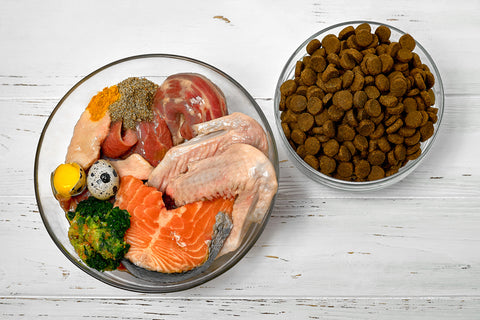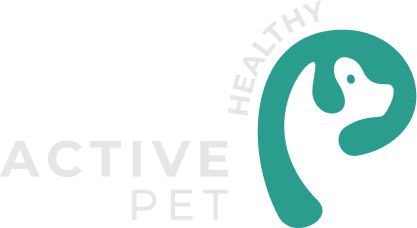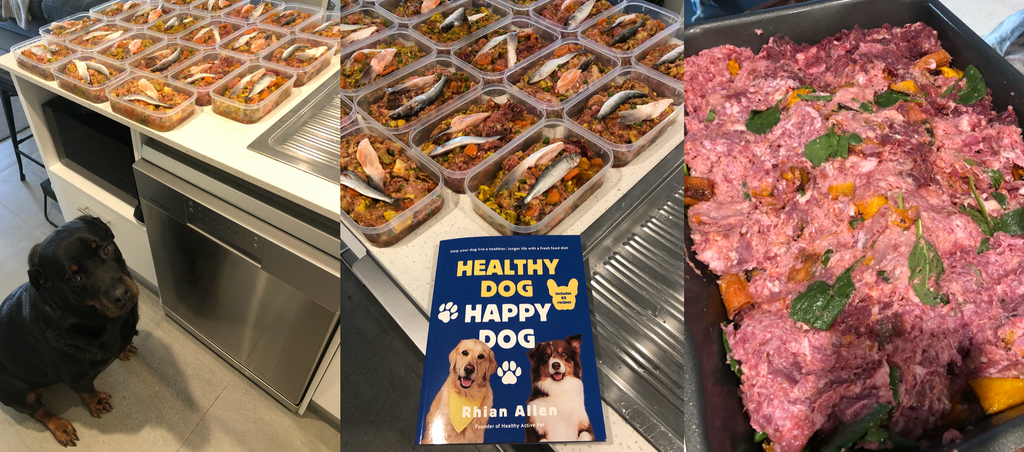
Why kibble isn't the best dog food to feed your dog
Gone are the days when kibble was the only option available for our furry friends. With the advancement in pet nutrition, we have come to understand the potential drawbacks of feeding our dogs a diet primarily consisting of kibble dog food.
In this section, we will explore the reasons why kibble may not be the optimal choice for your pet's nutrition and introduce a healthier alternative.

Key Takeaways:
- Kibble dog food may not provide the best nutrition for your dog
- Processing methods, ingredients, and potential health implications are associated with kibble diets
- A raw diet for dogs may offer potential benefits such as improved digestion, healthier coat, and increased energy levels
- Freeze-dried dog food is a convenient and nutritional alternative to kibble
- A raw meat diet for dogs can provide essential nutrients such as protein, essential fatty acids, and vitamins
Understanding the drawbacks of kibble
When it comes to choosing the best dog food for your furry friend, kibble may not be the healthiest option. While convenient, processed kibble can have potential drawbacks that can impact your dog's nutrition and overall health.
Processing methods
Kibble is made by grinding together various ingredients, including meat, grains, and vegetables. The mixture is then cooked at high temperatures, which can destroy some of the nutrients your dog needs to thrive. In addition, the processing can leave behind chemical residues and toxins, which can be harmful to your pet's health in the long term.
Ingredients
Kibble often contains fillers, such as corn, soy, and wheat, which have little nutritional value and can cause digestive issues for some dogs. Moreover, some kibble brands may use lower-quality meat products, such as by-products and meat meals, which can be difficult for dogs to digest and lead to health problems over time.
P.S you can also check out our 100% natural alternative to kibble - which is human grade and air and freeze dried dog food here.
Health implications
Feeding your dog a diet solely based on kibble can result in various health issues, including obesity, dental problems, and gastrointestinal distress. Furthermore, kibble diets have been linked to an increased risk of chronic diseases, such as diabetes and cancer.
"Feeding your dog a diet that mimics what their ancestors ate, such as a raw meat-based diet, can provide a more nutritionally complete meal and help prevent chronic diseases."
To ensure that you are providing your furry companion with the best nutrition possible, it is worthwhile considering other options, such as a raw meat-based diet or freeze-dried food.
The benefits of a raw diet for dogs
When it comes to providing our furry friends with the best nutrition possible, the benefits of a raw diet for dogs cannot be overstated. Raw pet food is a much healthier option for dogs than kibble and can lead to a multitude of benefits, including:
- Improved digestion and absorption of nutrients
- Increased energy levels and stamina
- Healthy skin and coat
- Reduced risk of disease and illness
Raw pet food is free from preservatives and additives and is purely composed of raw meat, fruits, vegetables, and bones. The natural enzymes found in raw pet food can benefit dogs in many ways, including aiding in digestion and reducing inflammation in the body.

The benefits of a raw diet for dogs
Raw pet food is an excellent source of essential nutrients such as protein, essential fatty acids, vitamins, and minerals that are vital to a dog's overall health and well-being. These nutrients help to build strong muscles, support healthy growth and development, and maintain the immune system's health.
A raw diet for dogs can also help prevent dental problems, such as gum disease and tooth decay. When dogs chew on meaty bones, they help to keep their teeth clean and strong, preventing the buildup of plaque and tartar on their teeth.
"Feeding a raw diet to your dog can be a game-changer for their health and happiness."
Transitioning to a raw diet for dogs
Transitioning from a kibble diet to a raw diet for dogs can be done gradually over a period of time to avoid digestive upset. Start by introducing small amounts of raw pet food into your dog's diet and gradually increasing the amount over a few weeks until they are fully transitioned.
The variety of raw food options for dogs
Raw pet food comes in a variety of formats, including pre-made patties, pet minces, and whole meat cuts. This makes it easy for pet owners to find the right type of food for their dogs. Additionally, there are several protein options available, including beef, chicken, lamb, and fish, ensuring that dogs can enjoy a varied and nutritious diet.
P.S you can also check out our 100% natural alternative to kibble - which is human grade and air and freeze dried dog food here.
The role of meaty bones in a raw diet
When it comes to a raw food diet for dogs, meaty bones play a crucial role in providing essential nutrients and keeping your furry friend's teeth strong and healthy. Here, we'll explore the benefits of incorporating beef meaty bones into your dog's raw diet.
The nutritional value of meaty bones
Beef meaty bones are rich in important nutrients that contribute to your dog's overall health. They are an excellent source of calcium, which is essential for strong bones and teeth. Additionally, they contain phosphorus, magnesium, and other minerals that promote healthy organ function and support the immune system.
Meaty bones are also a great source of protein. They contain collagen, which can help improve skin and coat health, and glucosamine, which supports joint health and mobility.
The dental benefits of chewing on bones
Chewing on beef meaty bones can help keep your dog's teeth clean and strong. The act of gnawing on bones helps remove plaque and tartar buildup, reducing the risk of dental disease and bad breath. Regular chewing can also strengthen your dog's jaw muscles, promoting overall dental health.
Safety considerations
While meaty bones offer many benefits for dogs, it's important to handle and serve them safely. Always supervise your dog while they are chewing on bones and provide them with appropriate-sized bones based on their breed and size. Avoid cooked bones, as they can splinter and cause choking or intestinal blockages. It's also important to source your meaty bones from a reputable and trusted supplier to ensure they are of high quality and free from harmful bacteria.
Incorporating meaty bones into your dog's diet
When introducing meaty bones into your dog's raw food diet, start with small pieces and gradually increase the size and frequency as your dog becomes accustomed to chewing on bones. You can offer meaty bones as a treat or meal replacement, depending on your dog's individual needs and dietary requirements.
Overall, incorporating beef meaty bones into your dog's raw food diet can provide a range of nutritional and dental benefits. Just be sure to handle and serve them safely and consult with your veterinarian to ensure a balanced and nutritious diet for your furry friend.
Exploring Freeze-Dried Dog Food
When it comes to feeding our furry friends, we want to provide them with the best possible nutrition. As we have discussed earlier, kibble may not always be the optimal choice for your dog's diet. Freeze-dried dog food is a great alternative that offers many benefits for your pet.
Freeze-drying is a process that removes all moisture from the food without using heat. This ensures that the food retains its nutritional value and freshness. Here are some of the advantages of feeding your dog freeze-dried food:
- Convenience: Freeze-dried dog food is lightweight and easy to store, making it an excellent choice for pet owners who travel frequently or have limited storage space.
- Nutritional Value: Freeze-dried food retains all the vitamins, minerals, and nutrients found in fresh food. This ensures that your dog is getting a balanced and nutritious meal.
- Palatability: Many dogs find freeze-dried food more appealing than kibble. This is because freeze-dried food has a meatier texture and flavour that dogs love.
It's essential to remember that not all freeze-dried dog food brands are created equal. It's crucial to choose a high-quality brand that uses natural ingredients and doesn't contain any harmful preservatives or chemicals. Always check the label and make sure that the food meets your dog's nutritional needs.

If you're considering switching your dog to a freeze-dried diet, it's a good idea to start by introducing the food gradually. Mix a small amount of freeze-dried food into your dog's current diet and gradually increase the amount over time. This will allow your dog's digestive system to adjust to the new food without any issues.
Giving your dog a nutritious and well-balanced diet is essential for their health and well-being. In addition to freeze-dried food, there are many other options available to meet your dog's nutritional needs. By exploring different types of food, you can provide your pet with the best possible nutrition for a happier and healthier life.
P.S you can also check out our 100% natural alternative to kibble - which is human grade and air and freeze dried dog food here.

The Advantages of a Raw Meat Diet for Dogs
Feeding your dog a raw meat diet can offer numerous health benefits that kibble and other processed foods may not provide. Raw meat is packed with essential nutrients that contribute to your dog's overall well-being.
Protein: Raw meat is an excellent source of protein, which is essential for building and repairing muscle tissue, producing enzymes and hormones, and supporting a healthy immune system.
Essential Fatty Acids: Raw meat contains omega-3 and omega-6 fatty acids, which help maintain healthy skin and coat, reduce inflammation, and support brain development.
Vitamins and Minerals: Raw meat is packed with vitamins and minerals, including vitamins B, D, and E, as well as iron, calcium, and zinc. These nutrients are crucial for maintaining your dog's overall health and ensuring the proper functioning of their organs and systems.
While kibble and other processed foods may include some of these nutrients, the processing and cooking methods often destroy or alter them, making them less bioavailable to your dog.
The Importance of Variety
It's essential to offer a variety of raw meats to ensure your dog receives a balanced and complete diet. Different meats provide different nutrients, so by offering a variety, you can ensure your dog gets everything they need.
| Raw Meat | Nutrient Profile |
|---|---|
| Beef | Protein, Iron, Zinc, Vitamin B12 |
| Chicken | Protein, Calcium, Vitamin B6, Niacin |
| Lamb | Protein, Iron, Vitamin B12, Zinc |
Addressing Concerns about Raw Meat
One concern about feeding dogs raw meat is the risk of bacterial contamination. However, by following proper handling and storage protocols, this risk can be minimized. It's also important to source high-quality meat from reputable suppliers to ensure it is safe for consumption.
Another concern is that raw meat may not be nutritionally balanced. However, by offering a variety of meats and including other ingredients such as organ meats, fruits, and vegetables, you can ensure your dog receives a complete and balanced diet.
Transitioning to a Raw Meat Diet
Transitioning your dog from kibble to a raw meat diet can take time and should be done gradually to avoid digestive upset. Start by introducing small amounts of raw meat and gradually increasing the portion size over several weeks. It's also important to consult with your veterinarian before making any significant changes to your dog's diet.
Overall, feeding your dog a raw meat diet can provide numerous health benefits and support their overall well-being. By offering a variety of high-quality meats and following proper handling and storage protocols, you can provide your furry companion with a nutritious and delicious diet.
Addressing Common Concerns About Raw Diets
When it comes to feeding a raw diet to your dog, it's common to have concerns or questions. Here, we will address some of the most frequently asked questions and provide evidence-based information to alleviate any worries you may have.
All raw meat carries harmful bacteria, so how can it be safe for my dog?
It's true that raw meat can carry harmful bacteria like Salmonella and E. coli, but it's important to remember that these bacteria can also be present in kibble and other types of food. When handling and feeding raw meat, it's essential to take precautions to ensure proper hygiene. This includes washing your hands and any utensils or surfaces that come into contact with the meat. Additionally, choosing a reputable brand like Healthy Active Pet Food can give you peace of mind that the meat has been sourced and handled safely.
Won't my dog choke on bones?
Feeding bones can be a concern for some pet owners, but it's important to note that not all bones are created equal. Cooked bones, such as those found in chicken or beef, can splinter and cause harm, but raw meaty bones are much safer. They are pliable and can be easily chewed and digested by your dog. As with any food, it's important to supervise your dog while they eat and choose appropriate bone sizes for their size and chewing abilities.
Isn't kibble more convenient and affordable than a raw diet?
While kibble may seem more convenient and affordable at first glance, it's important to factor in the long-term benefits of a raw diet. A raw diet can lead to fewer vet visits, improved digestion, and increased energy levels in your dog.
Is a raw diet suitable for all dogs?
A raw diet can be suitable for the majority of dogs, but it's important to consult with your veterinarian before making any changes to your dog's diet. Dogs with certain medical conditions, such as pancreatitis or liver disease, may require a specialised diet. Additionally, senior dogs may need a modified diet to account for their changing nutritional needs.
Do I need to add supplements to my dog's raw diet?
Feeding a balanced raw diet can provide your dog with all the necessary nutrients they need, but certain supplements may be beneficial in certain situations. For example, dogs with joint issues may benefit from the addition of glucosamine and chondroitin supplements. Again, it's important to consult with your veterinarian for personalised dietary advice.
The transition from kibble to raw
Transitioning your dog from a kibble diet to a raw food diet can take time and patience, but it can have significant benefits for your furry friend's health. Here are some tips to make the transition as smooth as possible:
- Start slow: Switching to a raw diet cold turkey can cause digestive upset for your dog. Begin by mixing in a small amount of raw food with their kibble and gradually increasing the amount of raw food over several weeks.
- Monitor their digestive system: Keep an eye on your dog's digestion and stool during the transition process. If you notice any digestive issues, slow down the transition or make adjustments to their diet.
- Offer a variety of proteins: When transitioning to raw pet food, offer a variety of proteins to ensure they are getting a balanced diet. Chicken, beef, lamb, and fish are all great options to start with.
- Consider adding supplements: Raw pet food is generally rich in nutrients, but some dogs may require additional supplements, such as omega-3 fatty acids, to maintain optimal health.
- Stay consistent: Once you have fully transitioned your dog to a raw diet, be consistent with their feeding schedule and the types of food you offer them. Consistency is key to ensuring your dog is getting the right balance of nutrients in their diet.
Remember, every dog is different, and the transition to a raw diet may take longer for some than others. Patience and consistency will pay off in the long run, as your dog will be healthier, happier, and full of energy with their new raw food diet.
Exploring the Variety of Raw Food Options
When it comes to raw pet food, there are a variety of options available to suit your dog's preferences and nutritional needs. Here are some of the different types of raw food you can choose from:
| Type of Raw Food | Description |
|---|---|
| Raw meat | This type of raw food includes fresh, unprocessed meat such as beef, lamb, and chicken. It is a great source of protein and essential nutrients for your dog. |
| Raw meaty bones | Meaty bones, such as beef ribs or chicken wings, are a good source of calcium and provide a dental benefit as your dog chews on them. |
| Organ meat | Organ meats, like liver or kidney, are rich in vitamins and minerals that are vital to your dog's health. |
| Fruits and vegetables | Adding fruits and vegetables to your dog's diet can provide a variety of vitamins and minerals. Some popular options include spinach, carrots, and blueberries. |
| Raw premade meals | If you're short on time, you can opt for premade raw meals. These often come frozen and may contain a mix of meat, bone, and vegetables. |
It's important to note that not all raw food options will be suitable for every dog. For example, some dogs may have allergies to certain proteins or may struggle with digesting certain foods. It's important to work with your vet to determine the best raw food options for your dog's individual needs.
When transitioning to a raw diet, it's also important to introduce new foods gradually and monitor your dog's health and digestion. A sudden switch to a new diet can cause digestive upset and discomfort for your furry friend.
- Tip: If you're not sure where to start with raw food options, consider trying a variety of different proteins to see what your dog enjoys the most. You can also consult with a veterinarian or a pet nutritionist for guidance on developing a balanced and nutritious raw food diet for your dog.
Conclusion
In conclusion, we have explored the potential drawbacks of kibble dog food and introduced a healthier alternative in the form of a raw diet. We discussed the benefits of raw food, including meaty bones, freeze-dried options, and the availability of quality brands like Healthy Active Pet Food. By considering a raw diet for your dog, you can provide them with a nutritionally rich and balanced meal that supports their overall well-being.
Why raw diets are better for your dog than kibble
Raw diets for dogs are gaining popularity for many reasons. One of the main advantages is that raw food provides essential nutrients that are often lost in the manufacturing process of kibble dog food. Raw diets can also improve digestion, promote healthier coats, and increase energy levels. By feeding your dog a raw meat diet, you can be sure that they are getting all the necessary nutrients to maintain optimal health.
Why Healthy Active Pet Food is a good choice for your pet
Healthy Active Pet is a quality brand that offers a range of raw and freeze dried dog food options for dogs. They use natural ingredients and offer a variety of products to cater to different breeds and sizes.
Transitioning from kibble to raw pet food
The transition from kibble to raw food can be a gradual process. It's important to introduce raw food slowly and monitor your dog's digestion to ensure that they don't experience any digestive issues. It's also important to use proper handling and storage techniques to ensure the safety of your pet.
Exploring the variety of raw food options
Raw food for dogs comes in a variety of proteins and formats. By offering a variety of foods, you can ensure that your dog is getting a balanced and nutritious diet. Meaty bones and freeze-dried options are also great additions to a raw diet, providing both nutritional and dental benefits.
Overall, a raw diet is becoming an increasingly popular choice among pet owners who are looking for a more nutritious option for their furry friend. By considering a raw meat diet for your dog and exploring quality brands like Healthy Active Pet Food, you can provide them with the benefits of a nutritionally rich and balanced meal.
FAQ
Why is kibble not the best dog food?
Kibble may not provide the optimal nutrition for your dog due to its processing methods, ingredients, and potential health implications.
What are the drawbacks of kibble dog food?
The drawbacks of kibble dog food include potential nutrient deficiencies, high carbohydrate content, and artificial additives.
What are the benefits of a raw diet for dogs?
A raw diet for dogs can lead to improved digestion, a healthier coat, increased energy levels, and overall better nutrition.
Why are meaty bones important in a raw diet?
Chewing on meaty bones helps keep dogs' teeth clean and strong, while also providing nutritional value in their diet.
What is freeze-dried dog food?
Freeze-dried dog food is an alternative to kibble that offers convenience, nutritional value, and palatability for dogs.
What are the advantages of a raw meat diet for dogs?
A raw meat diet for dogs provides essential nutrients such as protein, fatty acids, and vitamins that contribute to their overall health and well-being.
Are there any concerns about feeding dogs a raw diet?
We will address common concerns and misconceptions surrounding raw diets, providing evidence-based information to alleviate worries and emphasize proper handling and sourcing of raw food.
How do I transition my dog from kibble to a raw diet?
We will provide guidance on gradually transitioning your dog from a kibble diet to a raw food diet, offering tips to ensure a smooth transition without digestive issues.
What are the variety of raw food options available for dogs?
We will highlight the range of raw food options, including different proteins and formats, stressing the importance of providing a balanced and nutritious diet for your dog.
P.S you can also check out our 100% natural alternative to kibble - which is human grade and air and freeze dried dog food here.





